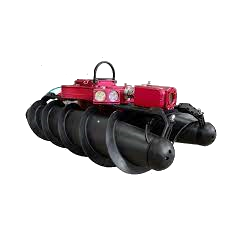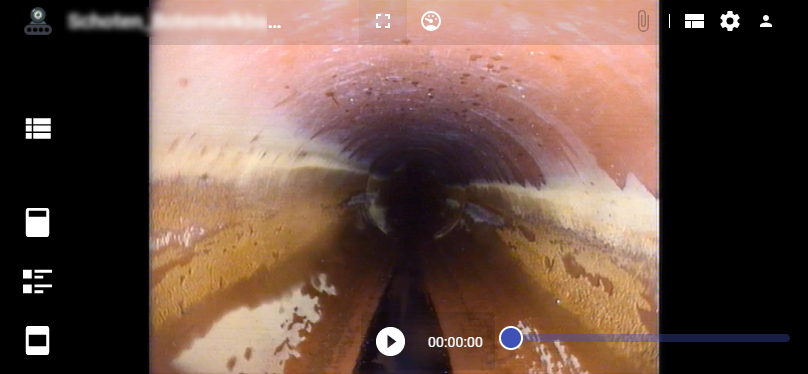2.0
A new release of CAM-I just became available with some big new features which you might like. Especially if you are interested in inspections of waterways that can't easily be reached with traditional (wheel based) crawlers or inspections with stationary / zoom cameras.
Here's a short list of everything new:
- Full integration for these easysight devices:
- X5 Amphibious,
- X1-H5 and
- X1-H
- Sonar display
- Lidar display
- Tablet view
- new dashboard sensors for wheel & cavity pressure, battery level, accelero meter & measured distance
- laser distance measurement where distance is reported by laser or calculated from image
- redesigned gauge for camera position
- calibration for acceleration & camera position
- controller view for remote control of your crawler & camera
- improved inclination view:
- show error range
- auto adjust measured height
- specify grouping distance
- export to svg
- and more
- Spoken alerts for tilt, roll and battery level
- a layout manager to switch between different stored layouts
- Updated sensors dashboard for dynamic scaling and layout
- Dynamic tracking of strand properties (ex: height & width)

The list of new features is too long to go into detail for all of them, but I'll try to pick out some of the more important ones and highlight the others a next time.
Probably the most important improvement is that you can now use CAM-I to inspect waterways and pipes that are (partially) flooded and can't easily be reached using wheel or track based devices.
With the sonar, you can see what's going on below the water line and where exactly the edges of the waterway are compared to your crawler. The same for the lidar, but for everything above water.
This development was initiated by the integration of the easysight X5 Amphibious (https://www.dantec.it/prezzi/telecamera-drone-anfibio/) and, thanks the architecture of CAM-I, any crawler that provides sonar can be supported.
I spent quite a bit of time on the new rendering engines for sonar and lidar to optimize them, which worked out really well. It also gave me some new insights on what else to do with this data, so you can expect some more interesting things in the near future on this topic.

Another big new feature in this version is the new screen layout manager together with it's 'tablet-mode'. In short, this feature allows you to store and recall different window layouts and settings that you made where every layout starts from one of the 2 major pre-defined layouts: normal or tablet view.
What's the use-case behind this you might wonder? Well image you have a truck that is equipped with a stationary camera and multiple crawlers. Instead of having different computers and tablets, you can operate all of them from the same tablet, which can adjust according to your needs of the moment: when you are working with the stationary camera, put it in tablet mode so that you can hold the smaller screen without keyboard in your hand while performing the inspection. For the crawlers on the other hand, you might want to remain in the truck and use both the small screen and a second, big screen for video. Some crawlers might have multiple cameras, others have sonar or lidar. Thanks to the screen-layout manager, you can select the most appropriate view for the situation at hand, quickly and easily.
There's also an interesting new sensor available for measuring the distance from the camera to the wall by means of lasers. The application currently supports 2 different types: lasers that can report the distance themselves (most accurate) and a 2 laser setup where the calculation is done using image analysis. The latter works even with lasers that aren't perfectly parallel.
Would you like to know more or are you interested in a demo? Please feel free to contact me: Contact me
Sincerely, Jan.